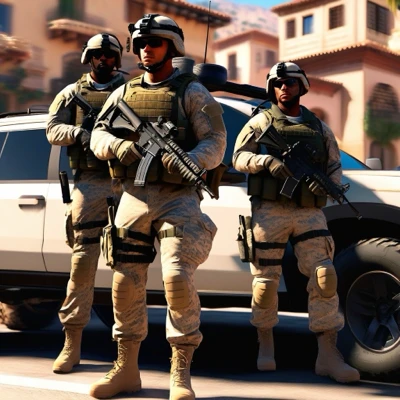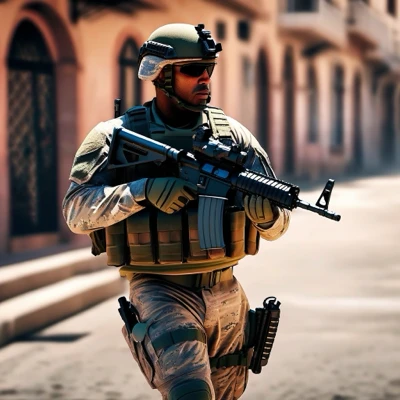Military sexual assault
Table of Contents
ToggleUnderstanding the Scope of Military sexual assault
Sexual assault in the military is a persistent and troubling problem, yet recent studies have found some stark discrepancies between the official reports and the real number of incidents. Researchers have consistently found that the actual number of sexual assaults occurring in the military is two to four times higher than what the Department of Defense statistics show(RAND Corporation).
This is a serious and significant underreporting(RAND Corporation). It not only threatens the integrity of the numbers and our ability to understand the scope of the problem truly, but it also makes addressing the problem that much harder. And why is it underreported(RAND Corporation)?
Several reasons are given, but the sacred cow issue of “retaliation” seems to be the one that garners the most attention(U). Research shows that many service members who are sexually assaulted do not report the crime to their chain of command or military law enforcement.
Various factors influence this decision—some members fear facing repercussions if they report a superior, while others worry that they and their families may not be safe if they do. Many quiet their pain rather than go through what they see as an unfair, demeaning, and insufficient process. Silence can feel like a member’s only safe option; too often, though, it is the only way they seem able to retain some semblance of control over the situation. And yet, if we in the military do not know what is happening to our members, how can we lead by the example of confronting tough issues head-on?
(Note. Military personnel diverse group in formation standing at attention)
(Diversity in U.S., Partner Militaries Is a Strategic Strength > U.S. Department of Defense …)
Reporting Challenges and Barriers
The issue of sexual assault reporting in the military presents complex challenges that significantly impact the accuracy and completeness of incident documentation. These barriers create a substantial gap between actual occurrences and reported cases, hindering efforts to address and prevent military sexual assault effectively(California State University).
Institutional Barriers
The hierarchical structure and distinct organizational culture of the military pose considerable hurdles for sexual assault survivors who wish to report incidents. A chief deterrent is the fear of ramifications for one’s career.
Many service members are understandably apprehensive that reporting an incident might constitute a “career-ender,” jeopardizing their upward mobility and good-name status, which is supposedly protected by the integrity of the military justice system.
The reality, in many instances, is that a service member’s name is more likely to be dishonored for being a reporting service member than it is for being an alleged sexual assailant. Service members also fear not being believed(California State University). They fear being thought of as liars by some, and they especially fear the prospect of being thought of as liars who have caused significant harm to an innocent person and a military unit.
Support System Gaps
The military’s support network for survivors of sexual assault has significant, persisting gaps despite the establishment of an Office to “Prevent and Respond to Sexual Assault.” The intent of the current system is good, but the execution is poor, and it just misses the mark too frequently. The current system almost invariably fails to provide even mediocre support to survivors, much less the kind of support that addresses the immediate and long-term needs of survivors.
The education and training level around sexual assault awareness and prevention is also woefully inadequate throughout the military. Far too many members of the military — both on the perpetration side and on the survivor side — are not fully educated on the 24/7 availability of help and the services that are part of this support system.
(Note. Military sexual assault support services infographic showing reporting channels and available resources)
(Sexual Violence in the Military: Infographic | National Sexual Violence Resource Center (NSVRC))
Policy Framework and Future Directions
Current Policies
The Sexual Assault Prevention and Response Office is mainly responsible for overseeing the comprehensive policies developed by the Department of Defense to counter sexual assault in the military(U). These policies encompass every aspect of military life, which is vital since the U.S. military is such a closed society.
They spell out not only what constitutes sexual assault, how it is to be prosecuted, and what the penalties are, but they also cover what to do if a military member is sexually assaulted and provides a roadmap to the kind of support that should be available to the victim. The bottom line is that any member of the U.S. armed forces who is sexually assaulted is guaranteed a “way back” to the military only if he or she chooses to return; and the way back is to be a path with far fewer obstacles than formerly seemed to be the case.
Reform Initiatives
The military justice system is seeing change that promises to make it more equitable for victims of sexual assault(U). Previous efforts to reform the system largely had little impact and were resisted by the military. This time, however, change appears to be taking hold. One of the most significant recent reforms, which Congress mandated in the 2016 National Defense Authorization Act, requires the military to put citizens who are not military officers in what are called “command” positions—we’re talking mainly about sourcing for the command-level positions of military bases. The idea is to make the reforms stick and to allow sexual assault cases to be prosecuted without the insidious interference of military culture.
 (Note. Military sexual assault prevention training session with diverse service members participating in group discussion)
(Note. Military sexual assault prevention training session with diverse service members participating in group discussion)
(Interactive Sexual Assault Awareness Training | Article | The United States Army)



